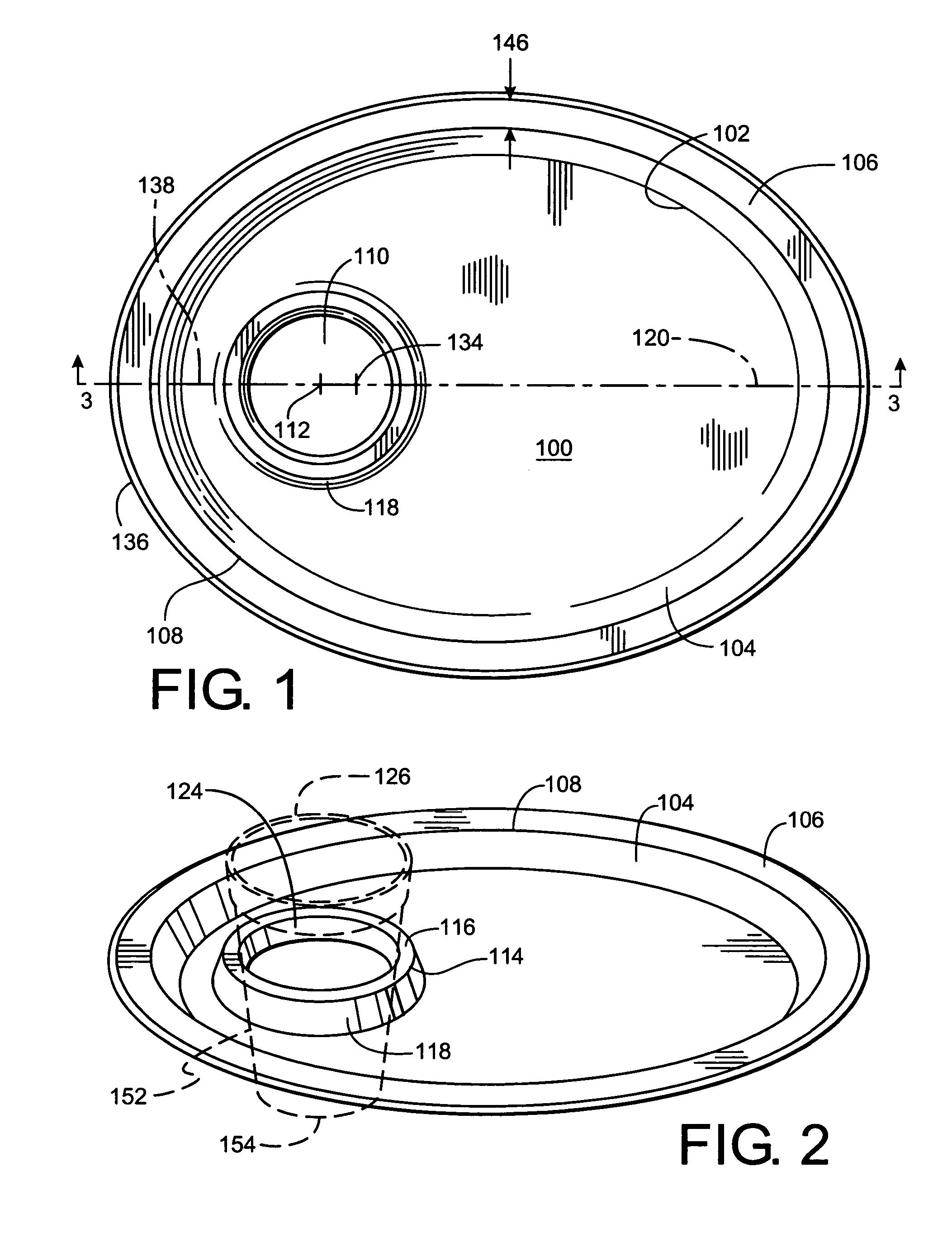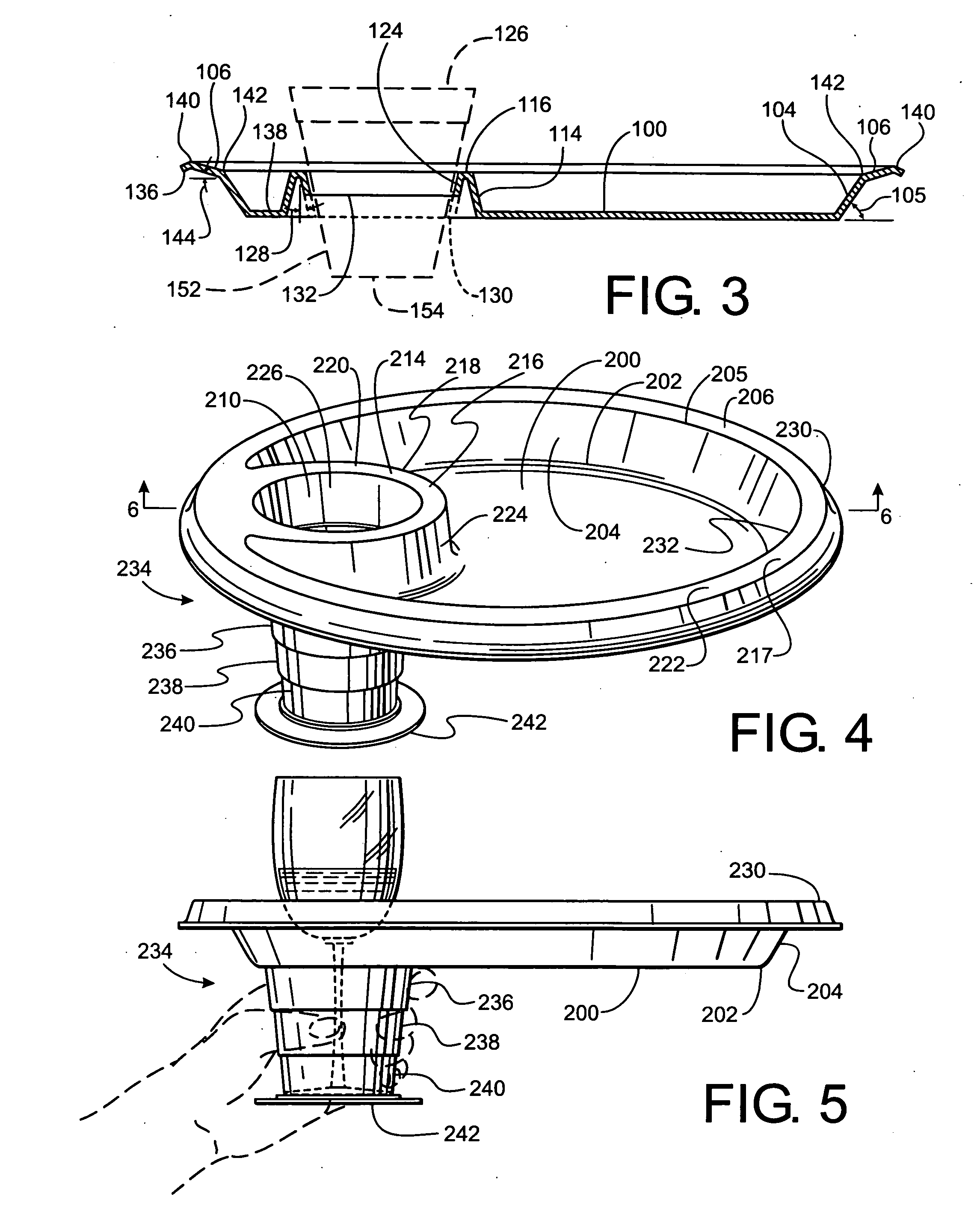Combined plate and cupholder
a combination plate and cupholder technology, applied in the field of housewares, can solve the problems of inability to fully meet the needs of use,
- Summary
- Abstract
- Description
- Claims
- Application Information
AI Technical Summary
Benefits of technology
Problems solved by technology
Method used
Image
Examples
Embodiment Construction
[0046] Referring now to FIGS. 1-3, a combined plate and cupholder is shown. The plate includes a planar base portion 100 that is elliptical and is configured to rest upon a flat surface such as a table. The planar base portion 100 constitutes substantially an entire ellipse, and has a peripheral elliptical edge 102 extending completely around the entire planar base portion 100. A generally outwardly tapered sidewall 104 is coupled to the base portion 100 along edge 102. Sidewall 104 defines an entire ellipse, and extends upward from the base portion 100 between 0.5 and 1.5 inches high. Sidewall 104 is preferably disposed at an angle 105 (FIG. 3) to base portion 100 of between 20° and 75° from the horizontal. An elliptical flange 106 is coupled to the top edge 108 of sidewall 104 and extends outward therefrom. Flange 106 is planar or a shallow conical section and is spaced a constant distance apart from base portion 100.
[0047] An aperture 110 having a center 112 is disposed at and e...
PUM
 Login to View More
Login to View More Abstract
Description
Claims
Application Information
 Login to View More
Login to View More - R&D
- Intellectual Property
- Life Sciences
- Materials
- Tech Scout
- Unparalleled Data Quality
- Higher Quality Content
- 60% Fewer Hallucinations
Browse by: Latest US Patents, China's latest patents, Technical Efficacy Thesaurus, Application Domain, Technology Topic, Popular Technical Reports.
© 2025 PatSnap. All rights reserved.Legal|Privacy policy|Modern Slavery Act Transparency Statement|Sitemap|About US| Contact US: help@patsnap.com



